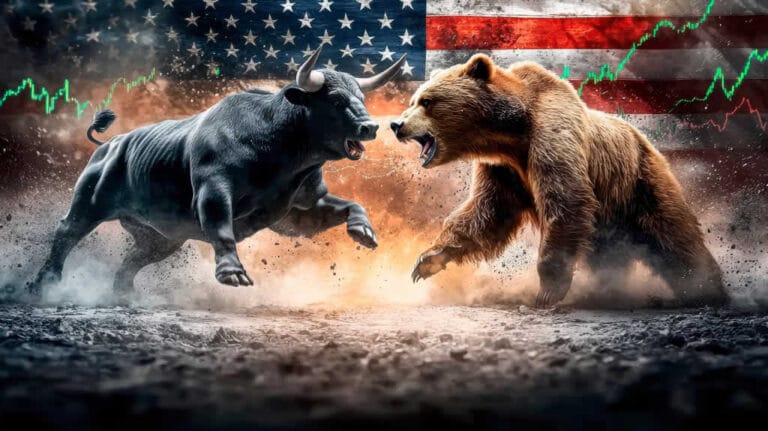Stress‑Testing Your Portfolio for 30% Drawdowns
A 30% portfolio drawdown can cripple $1M+ wealth, but stress-testing builds resilience. These strategies, backed by 40+ years of fiduciary expertise, reveal how to safeguard investments for investors and NIL athletes facing market turbulence.
Market crashes and portfolio drawdowns—sharp declines of 30% or more—can erase years of progress for $1M+ investors in just weeks. During the 2008 financial crisis, the S&P 500 dropped 38%. Even the 2022–2023 bear market cut 25% from tech-heavy portfolios, costing many investors hundreds of thousands.
For entrepreneurs and NIL athletes, concentrated holdings and short earning windows make these shocks even more dangerous. Stress-testing—simulating your portfolio’s performance in extreme scenarios—is essential for serious wealth protection. Here are five practical strategies to help $1M+ investors safeguard against major drawdowns.
The Urgency of Stress-Testing
Drawdowns of 30% happen roughly every 5–7 years, and recovery often takes one to three years (Morningstar, 2024). A $1M portfolio falling to $700K means you need a 43% gain just to break even. Taxes on gains (20% federal, 3.8% NIIT, and state levies) add another challenge, making it harder to reposition. NIL athletes, with limited earning years, have even less room for error. According to Vanguard, portfolios that have been stress-tested tend to hold onto 85–90% of their value in crashes, compared to just 60–70% for portfolios that haven’t been tested.
Effective stress-testing uses tools like Monte Carlo simulations, historical crash data, and volatility metrics (such as the VIX) to model worst-case scenarios and make adjustments in advance.
Case Study: The $6M Portfolio Stress-Test Triumph
In 2022, a tech entrepreneur had a $6M portfolio: $3M in tech stocks, $1.5M in growth ETFs, $1M in corporate bonds, and $500K in cash. Facing a possible 30% market drawdown, they stress-tested their portfolio with Monte Carlo simulations.
Instead of simply holding or panic-selling (which would have triggered $300K in taxes), the portfolio was reallocated: $2M into a low-beta ETF (SPLV), $1M into Treasury notes for stability, and $500K to covered calls for extra income. $1M remained in growth stocks for future upside. When the market fell 28%, this portfolio only dropped 12% ($720K), saving $1M versus those who didn’t prepare. By 2025, the account was back up to $6.2M, yielding $200K per year.
Five Smart Stress-Testing Strategies for 30% Drawdowns
To weather major market drops, use these strategies to stress-test your portfolio:
- Run Monte Carlo Simulations: Use tools like RightCapital or Portfolio Visualizer to test your portfolio against thousands of scenarios—including 30% drawdowns, high inflation, and large unexpected expenses.
- Diversify with Low-Beta Assets: Allocate 40–50% to low-beta ETFs or dividend aristocrats. These help cushion volatility and can reduce portfolio swings by 15–20% during crashes.
- Use Protective Options: Buy put options (for example, six months out, 10% below current prices) on part of your holdings to limit losses, even if it costs 1–2% of your portfolio’s value.
- Increase Safe-Haven Holdings: Move 20–30% into Treasuries or municipal bonds for steady yield and principal protection during downturns.
- Maintain Liquidity Reserves: Keep 10–15% in high-yield savings or money market accounts so you’re never forced to sell at a market low.
Actionable Tips for Investors
- Audit Risk Quarterly: Use portfolio tools to check your exposure to volatile assets and avoid over-concentration—especially in single stocks or sectors.
- Automate Stress-Tests: Schedule Monte Carlo tests every six months to keep your risk in check, aiming for less than 15% drawdown in the worst scenarios.
- Work with a Fiduciary Advisor: Seek a fee-only, fiduciary advisor for unbiased guidance and to avoid unnecessary fees.
- Monitor Volatility: Keep an eye on the VIX index; when volatility spikes, consider tightening your hedges and reviewing allocations.
- Reinvest Safe-Haven Yields: Put the income from bonds or dividends back into growth assets as markets recover.
Challenges and Considerations
Stress-testing requires real effort. Market drops vary in timing and size, and taxes can complicate reallocating assets. Liquidity needs, like major healthcare expenses, may force you to sell at a loss. Hedging with options can be costly. Behavioral mistakes—like panic selling or overconfidence—remain a risk. The key is to be proactive, not reactive: keep your models updated and stick to your plan even when markets are rough.
Conclusion
Major drawdowns are a threat to any large portfolio, but stress-testing gives you the tools to handle the next crash. With diversification, options strategies, and ample liquidity, you can keep your wealth intact—and maybe even come out ahead. Take the time to run simulations, review your allocations, and keep your plan updated so you’re never caught off guard by volatility.
Sources
- Vanguard. (2024). Stress-Testing Portfolios for Market Crashes. https://www.vanguard.com/insights/stress-testing-portfolios
- Morningstar. (2024). 2022–2023 Bear Market Analysis. https://www.morningstar.com
- CBOE. (2024). Options Strategies for Portfolio Protection. https://www.cboe.com/learncenter/education/hedging-strategies
- IRS. (2025). Publication 550: Investment Income and Expenses. https://www.irs.gov/publications/p550







